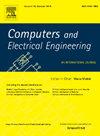利用新型混合密集 F-LSTM 网络识别图像劣化源并进行图像复原
IF 4
3区 计算机科学
Q1 COMPUTER SCIENCE, HARDWARE & ARCHITECTURE
引用次数: 0
摘要
图像退化已经引起了图像处理和计算机视觉领域研究人员的极大兴趣,因为图像可能包含几种退化,导致不同类型的模糊、噪声和扭曲。为此,提出了一种新的用于识别图像退化源的混合优化网络DenseNet Fused Long - Short Term Memory (Dense F-LSTM)。首先,从数据库中获取带有噪声和模糊的输入图像,进行噪声像素识别和图像源退化识别,其中噪声像素识别由深度卷积神经网络(Deep Convolutional Neural Network, DCNN)完成,图像源退化采用本文提出的Dense F-LSTM。将识别出的噪声像素送入2型模糊布谷鸟搜索(T2FCS)滤波器进行噪声校正,得到去噪后的图像。一旦图像源被识别,识别的图像退化源和去噪图像被用于执行去模糊。在这里,去模糊是通过内核估计完成的,它是使用JWaO (Jaya Walrus Optimization)进行最佳选择的。JWaO由Jaya算法(JA)和Walrus优化算法(WaOA)集成而成。将去噪后的图像和去模糊后的图像进行融合,得到最终的输出图像。所设计的Dense F-LSTM方法具有较好的识别性能,二阶导数增强测度(SDME)为59.956,峰值信噪比(PSNR)为49.924 dB,结构相似指数测度(SSIM)为0.979,均方误差(MSE)为0.2。本文章由计算机程序翻译,如有差异,请以英文原文为准。
Identification of source of image degradation using a new hybrid dense F-LSTM network and image restoration
Image degradation has been garnering huge interest from researchers in the field of image processing and computer vision as images may contain several degradations that lead to different types of blurring, noise, and distortions. Hence, a new hybrid optimized network named DenseNet Fused Long Short Term Memory (Dense F-LSTM) is proposed for the identification of the source of image degradation. Initially, the input image with noise and blur is taken from the database and is subjected to noisy pixel identification, and identification of image source degradation, where the noise pixel identification is performed by Deep Convolutional Neural Network (DCNN), and the image source degradation is employed by proposed Dense F-LSTM. The identified noisy pixel is fed to the Type 2 Fuzzy and Cuckoo Search (T2FCS) filter for noisy correction for obtaining the denoised images. Once the image source is identified, the identified source of image degradation and the denoised image is used for performing deblurring. Here, deblurring is done by kernel estimation, which is optimally selected employing Jaya Walrus Optimization (JWaO). The JWaO is formed by the integration of the Jaya Algorithm (JA) and Walrus Optimization Algorithm (WaOA). Both the denoised image and deblurred image are fused to gain the final output image. The devised Dense F-LSTM method provided superior identification performance and achieved a Second-Derivative-like Measure of Enhancement (SDME) is 59.956, Peak Signal Noise Ratio (PSNR) is 49.924 dB and Structural Similarity Index Measure (SSIM) is 0.979, and Mean Squared Error (MSE) of 0.2.
求助全文
通过发布文献求助,成功后即可免费获取论文全文。
去求助
来源期刊

Computers & Electrical Engineering
工程技术-工程:电子与电气
CiteScore
9.20
自引率
7.00%
发文量
661
审稿时长
47 days
期刊介绍:
The impact of computers has nowhere been more revolutionary than in electrical engineering. The design, analysis, and operation of electrical and electronic systems are now dominated by computers, a transformation that has been motivated by the natural ease of interface between computers and electrical systems, and the promise of spectacular improvements in speed and efficiency.
Published since 1973, Computers & Electrical Engineering provides rapid publication of topical research into the integration of computer technology and computational techniques with electrical and electronic systems. The journal publishes papers featuring novel implementations of computers and computational techniques in areas like signal and image processing, high-performance computing, parallel processing, and communications. Special attention will be paid to papers describing innovative architectures, algorithms, and software tools.
 求助内容:
求助内容: 应助结果提醒方式:
应助结果提醒方式:


